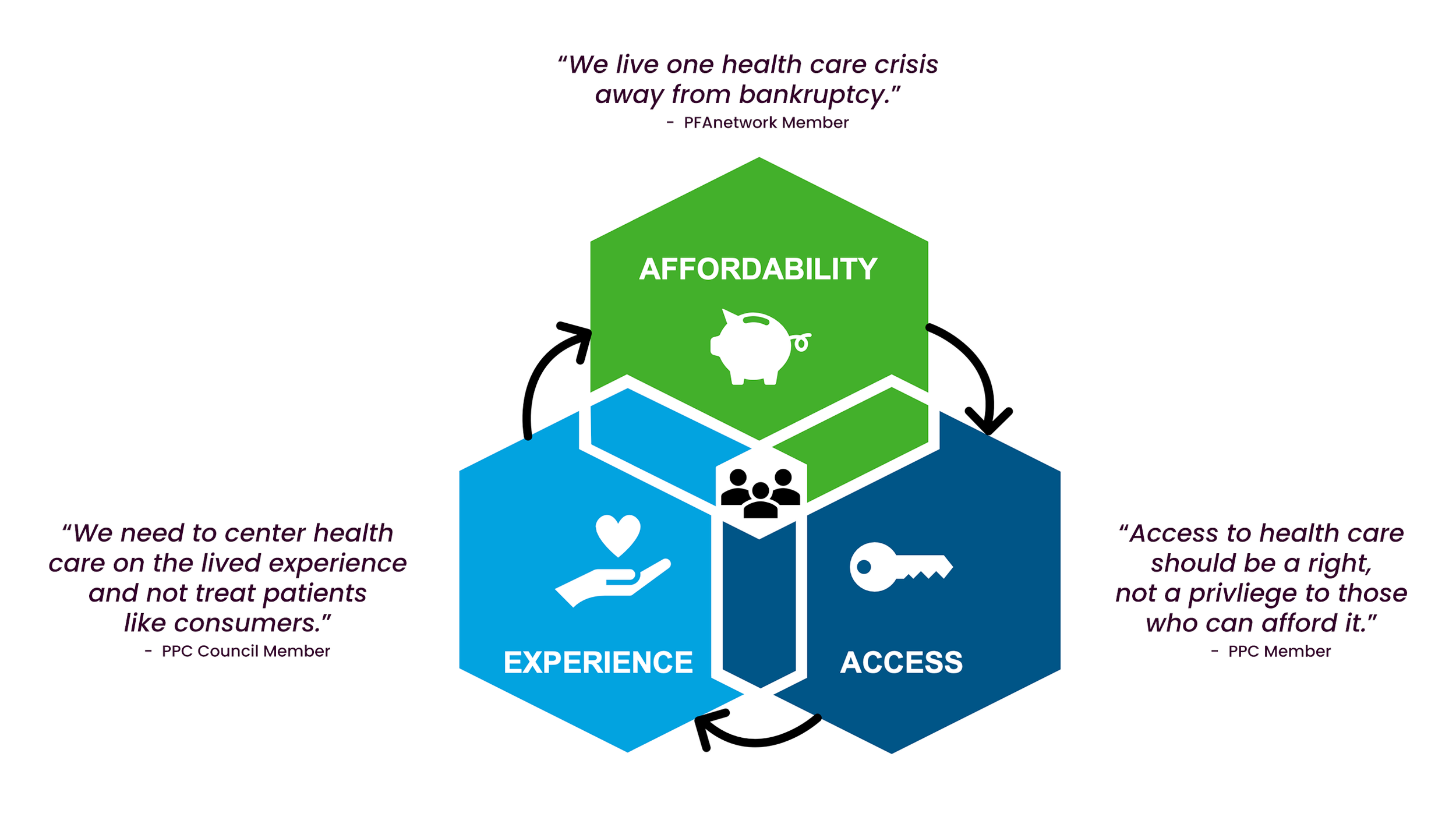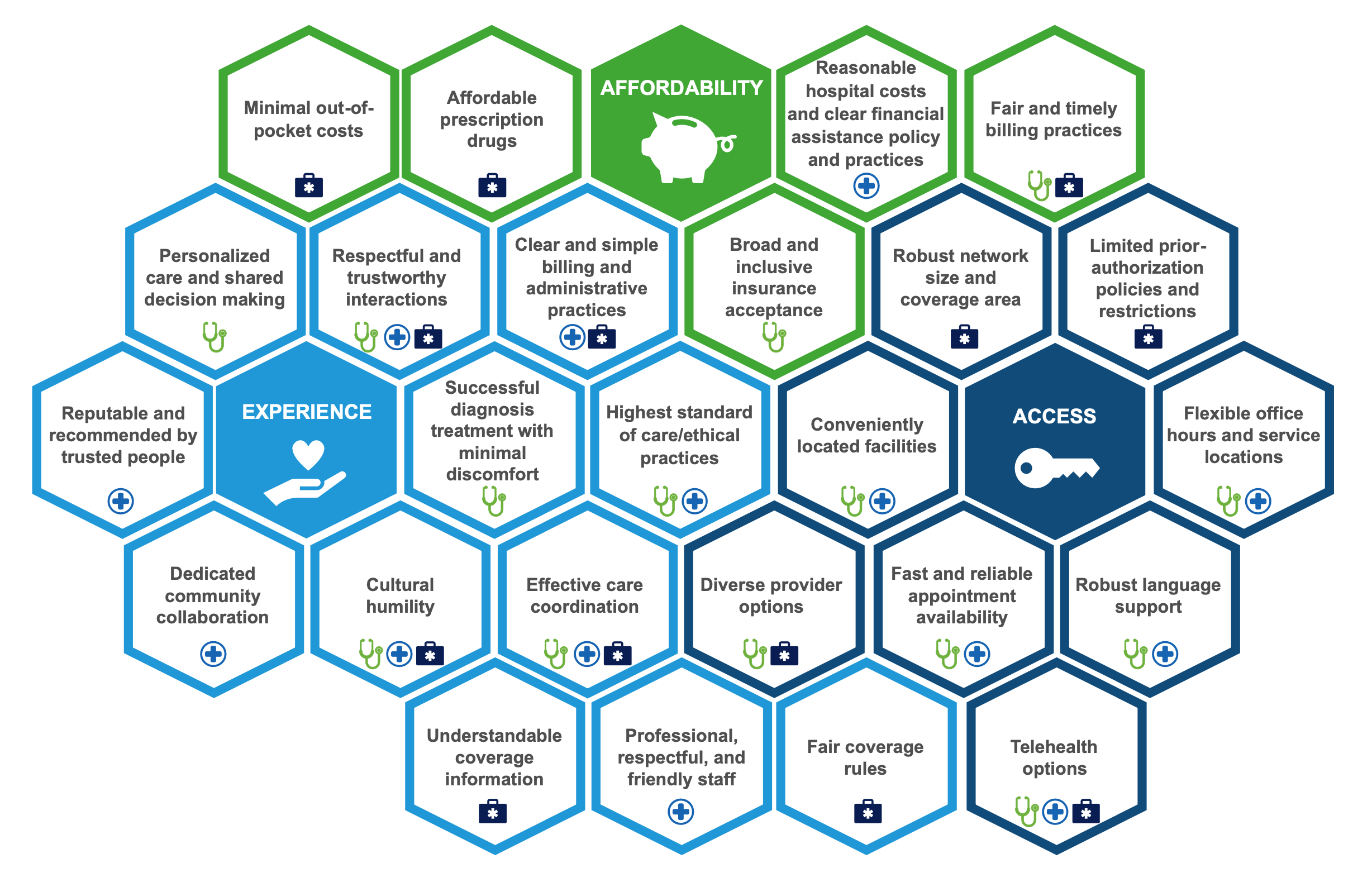What People Value In Their Health Care
What People Value
In Their Health Care
A Guide for Health Plans and Provider Organizations: Understanding the many dimensions of needs that influence what people prioritize when seeking health care services
HCPLAN Person Perspectives Council
The HCPLAN launched the Person Perspectives Council in late 2023 to champion and promote people’s lived experience in the health care system as it relates to the advancement of alternative payment models and value- based care. Council members serve as powerful voices driving their individual missions and increasing the focus on person-centeredness within the HCPLAN and the industry overall.
Current council membership includes representatives from four organizations:
PFCCpartners
Community Catalyst
FamiliesUSA
National Partnership for Women & Families
The business of health care in this country wields enormous power compared to individuals and communities and could be much more intentional about wielding it in ways that protect and enhance everyone’s health. A strong focus on what people say they need and want from the health care system is needed. These findings on person-centered health care priorities can assist entities like health plans, providers, and provider organizations in better achieving a more nuanced understanding of patients’ needs and preferences to improve health outcomes and patient experience in the US. Operationalizing principles can also enhance health organization programmatic and financial strength needed to build healthier communities. Applying the insights of people with lived experience is a critical first step towards adopting practices that improve health outcomes through increased dignity, trust, respect, and ultimately, quality of life.
Factors People Prioritize When Seeking Health Care
The Disconnect Between the Industry Today and People’s Priorities
Through assessment of priority dimensions and individual factors, the PPC has identified common sentiments and themes that people hold regarding their health care and about the industry as a whole:
1. Health care costs need to be distributed more fairly to alleviate burdens on people. Many people have difficulty managing health care payments among other financial obligations and feel that too much of the cost burden is falling on people in need of care. This is especially true for out-of-pocket and prescription drug costs; people are unable to afford the cost of care and do not understand why there are such significant cost obligations beyond their regular health coverage contributions. Health industry activation of affordable care strategies is required to ensure health care for all
2. Doctors and services must be placed within reach of more people. People are unsatisfied by the limited health care options available, which too often require travel to distant locations, are offered during work hours, or are not available when people need them. At a minimum, these issues restrict people’s ability to tailor their health care to their personal and lifestyle needs; at worst, people are unable to access critical services altogether. Integrating access enablers into health care models is essential to breaking down current barriers
3. Experience standards and practices should be rooted in people’s needs. While there is general trust in health care providers, many people feel that the system does not account for their needs, does not always respect them, overlooks people’s expectations regarding the quality of their care, and the impact of experiences on health outcomes. Health care entities must adopt programs that measure the quality of the care people receive as well as the quality of their experiences in receiving it.
Disconnects between what people need and prioritize in their health care and what the industry delivers contribute to the underutilization of available high-value health resources and overutilization of more expensive emergency care, exacerbate health and social inequities, and endanger people’s wellbeing. Frank introspection around health organization motivation alignment with the priorities outlined in this assessment must occur to identify existing gaps and eventually develop solutions to provide what people prioritize, for population health prosperity and the fortitude of the health care system. The HCPLAN and Person Perspective Council urge health care leaders to accept these priorities as what people need and adopt them into organizational planning and implementation. Organizations can start by taking the following actions:
• Embrace people’s priorities – deepen your understanding and support organizational recognition of people’s health care priorities. Hold listening sessions with the people you serve to enhance your understanding of their unique needs.
• Understand your population – gain insights into your specific patient population’s needs to tailor application of priorities (e.g., requesting language preference in pre-service questionnaires, translation resources for administrative and clinical staff, etc.)
• Reflect on alignment – are these priorities embedded in the health plan or program design? Is there infrastructure in place to support alignment? Include people as design contributors by hearing from the people you serve about how they see these priorities reflected, or not, in the health plan and program design (e.g., compare current goals and tactical plans to priority factors then, pursue plans that are mutually beneficial)
• Commit to continuous improvement – add accountability to these priorities to organizational infrastructure and use tools to help elicit people’s priorities (e.g., shared decision-making, care coordination advancement, etc.)





